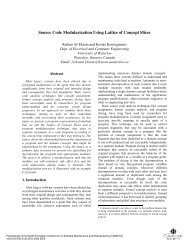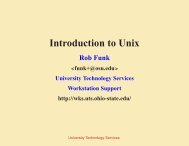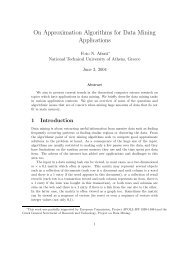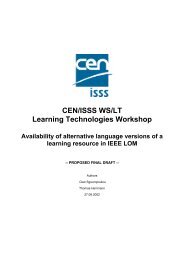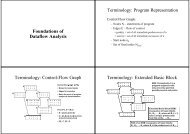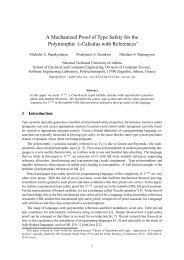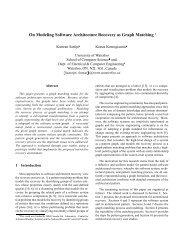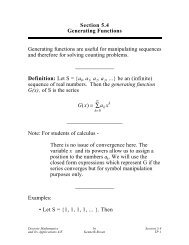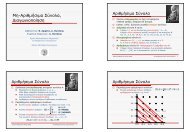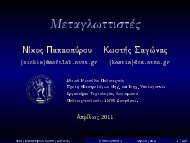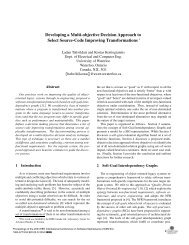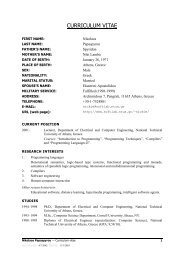Manual
Manual
Manual
You also want an ePaper? Increase the reach of your titles
YUMPU automatically turns print PDFs into web optimized ePapers that Google loves.
Chapter 2: Examples 25<br />
;<br />
This definition reads as follows: “A complete input is either an empty string, or a<br />
complete input followed by an input line”. Notice that “complete input” is defined in terms<br />
of itself. This definition is said to be left recursive since input appears always as the<br />
leftmost symbol in the sequence. See Section 3.4 [Recursive Rules], page 45.<br />
The first alternative is empty because there are no symbols between the colon and the<br />
first ‘|’; this means that input can match an empty string of input (no tokens). We write<br />
the rules this way because it is legitimate to type Ctrl-d right after you start the calculator.<br />
It’s conventional to put an empty alternative first and write the comment ‘/* empty */’ in<br />
it.<br />
The second alternate rule (input line) handles all nontrivial input. It means, “After<br />
reading any number of lines, read one more line if possible.” The left recursion makes this<br />
rule into a loop. Since the first alternative matches empty input, the loop can be executed<br />
zero or more times.<br />
The parser function yyparse continues to process input until a grammatical error is seen<br />
or the lexical analyzer says there are no more input tokens; we will arrange for the latter<br />
to happen at end-of-input.<br />
2.1.2.2 Explanation of line<br />
Now consider the definition of line:<br />
line:<br />
;<br />
’\n’<br />
| exp ’\n’ { printf ("\t%.10g\n", $1); }<br />
The first alternative is a token which is a newline character; this means that rpcalc<br />
accepts a blank line (and ignores it, since there is no action). The second alternative is<br />
an expression followed by a newline. This is the alternative that makes rpcalc useful. The<br />
semantic value of the exp grouping is the value of $1 because the exp in question is the<br />
first symbol in the alternative. The action prints this value, which is the result of the<br />
computation the user asked for.<br />
This action is unusual because it does not assign a value to $$. As a consequence, the<br />
semantic value associated with the line is uninitialized (its value will be unpredictable).<br />
This would be a bug if that value were ever used, but we don’t use it: once rpcalc has<br />
printed the value of the user’s input line, that value is no longer needed.<br />
2.1.2.3 Explanation of expr<br />
The exp grouping has several rules, one for each kind of expression. The first rule handles<br />
the simplest expressions: those that are just numbers. The second handles an additionexpression,<br />
which looks like two expressions followed by a plus-sign. The third handles<br />
subtraction, and so on.<br />
exp:<br />
NUM<br />
| exp exp ’+’ { $$ = $1 + $2; }<br />
| exp exp ’-’ { $$ = $1 - $2; }<br />
...<br />
;



